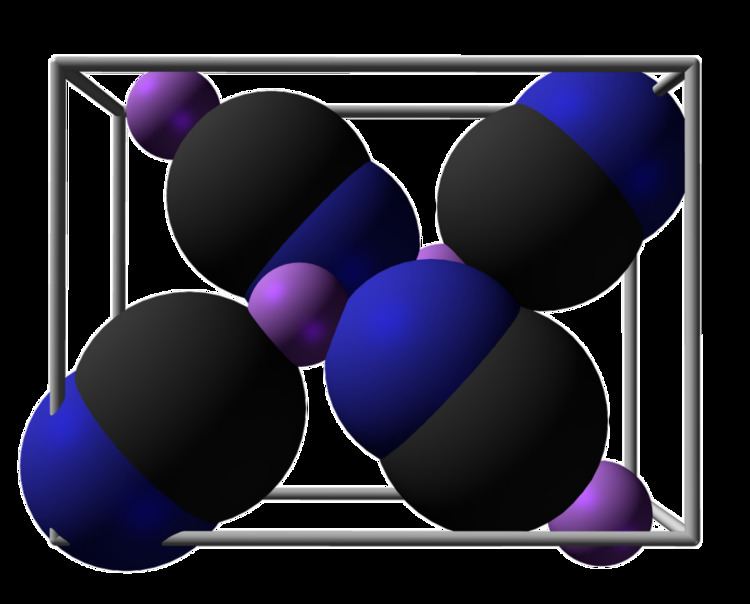Molar mass 32.959 g/mol Appearance White Powder | Density 1.073 g/cm³ | |
 | ||
Related compounds | ||
Lithium cyanide is an inorganic compound with the chemical formula LiCN. It is a white powder at room temperature. Lithium cyanide is commonly used as a reagent in inorganic/organometallic reactions. Lithium cyanide can be found in the environment from the reaction of lithium and acetonitrile, both found in lithium sulfur oxide batteries. When the compound is exposed to the environment it can produce toxic fumes with weak acids found in nature.
Contents
Stability and reactivity
Lithium cyanide as a solid is stable at room temperature. LiCN, when melted at 160 °C, is highly hygroscopic. The compound decomposes to cyanamide and carbon when heated to a temperature close to but below 600°C. When acids, chlorates, and other strong oxidizing agents react with LiCN, HCN is formed. HCN vapors are very toxic and reactive. If LiCN is heated in fire carbon dioxide CO2, nitrogen oxides NOx, and lithium oxide will form.
Synthesis and production
Li + R-CN → LiCNLi + HCN(Benzene) → LiCNLithium cyanide can be synthesized in high yields with liquid hydrogen cyanide and n-butyllithium. Other methods exist, in which the lithium cation is added to the cyanide anion.
Cyanation
RX + LiCN —THF→ RCNLithium cyanide is commonly used as a reagent in syntheses of cyanide compounds, for example halide cyanides. The reagent offers the advantage of allowing non-aqueous methods of cyanation.
Environmental exposure
Lithium cyanide is an inorganic compound not commonly found in nature without human involvement. The most obtainable source of lithium is lithium batteries. Specifically, lithium sulfur dioxide batteries can lead to the formation of lithium cyanide from the reaction between the two chemicals found inside the battery, elemental lithium and acetonitrile. When lithium cyanide is introduced into the environment, it can react with acids or strong oxidizing agents to produce toxic HCN vapors in the environment or can produce carbon dioxide, nitrogen oxides, and lithium oxide if introduced to fire. Concerns about the hazardous nature of lithium sulfur oxide batteries waste were raised as lithium batteries became more obtainable. The US Environmental Protection Agency and Department of Defense evaluated the lithium sulfur oxide batteries and concluded that LiCN formation was one of the compounds leading to the hazardous waste.
